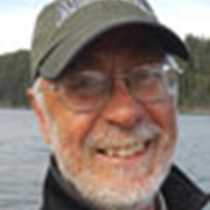It was a beautiful day—41 degrees F. in the morning; sunny and warm, almost too warm, in the afternoon. Late September is a fine time to sail on the Snake and Columbia Rivers in southeastern Washington State. National Geographic Sea Lion anchored near the mouth of the Palouse River—actually, on the slack impounded waters behind Lower Monumental Dam. Kayakers took to the river; others embarked in expedition landing crafts for guided nature tours. The first group headed by bus about 8 miles upriver to Palouse Falls State Park. Coyotes were out in abundance, some standing right by the road as we slowed to watch. Flocks of wild turkeys wandered by. Raptors soared overhead. The falls themselves, a magnificent remnant of the great ice age floods of 13-15,000 years ago, provoke awe and wonder.
We enjoyed a barbecue lunch on the aft deck as we departed down the Snake River, anticipating Lower Monumental (“Lomo”) Dam. Naturalist Sarah Keefer provided a moving and enlightening portrait of birds, nature, and what we all can do to help both. We imbibed sangria as we negotiated Ice Harbor Dam. Soon after, we reached an essential spot in the geography of North America—the junction of the Snake and Columbia Rivers. The Lewis and Clark Expedition came to this confluence on October 16, 1805. The water was so clear that Clark could see salmon swimming some 25 feet below the surface. Now the Americans understood how the Clearwater and Salmon Rivers combined with the Snake, which runs into the Columbia.
The day was eventful, but also relaxing. The only complaint heard from the audience of Road Scholars was that it ended too soon.









